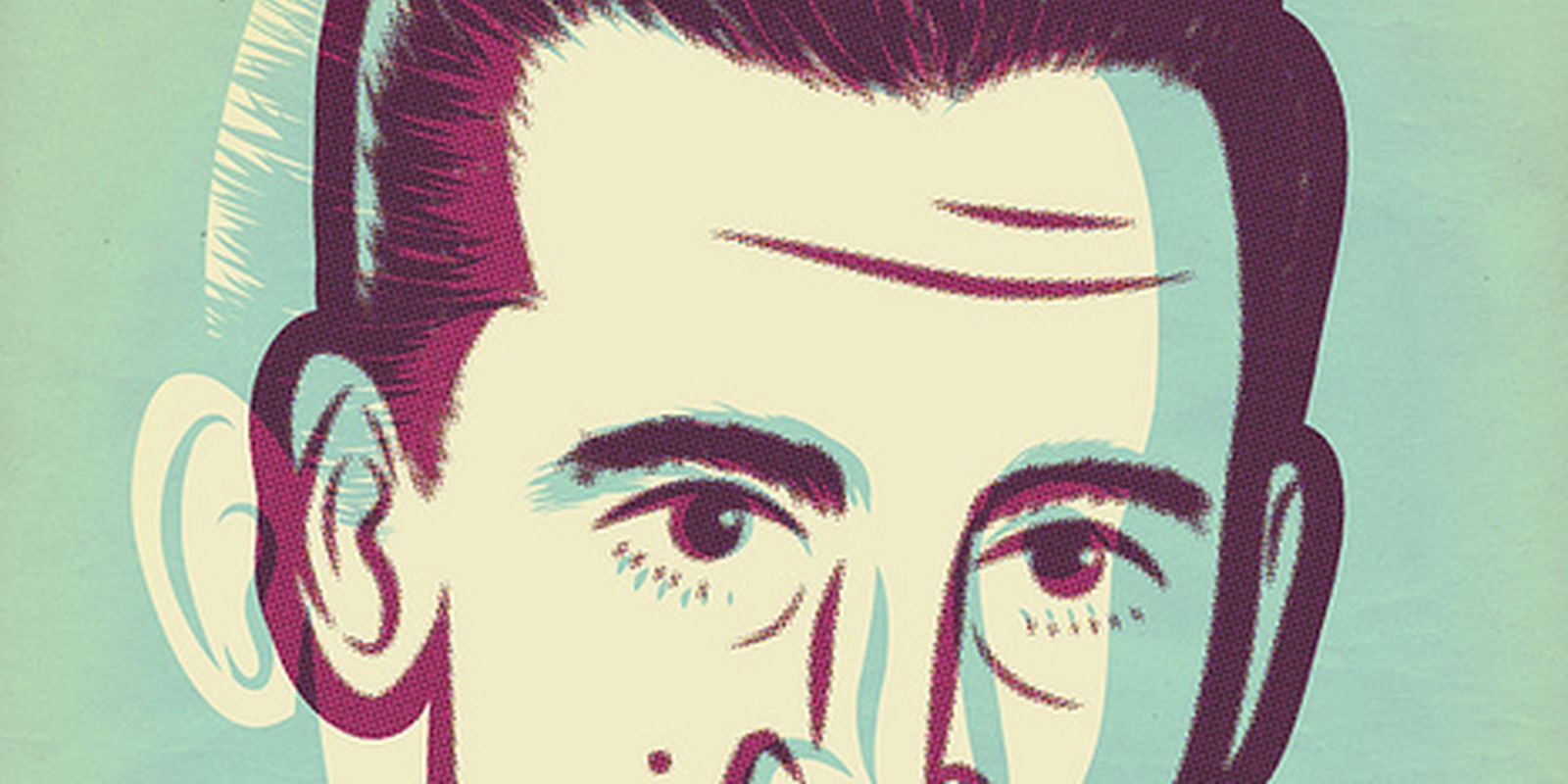An adjective counted among the highest compliments in prose—though too casually dropped by most critics—is “timeless.” It’s one thing for an author to capture her historical moment with savage wit and subtle poignancy, quite another to do so in a way that touches readers of the following century (let alone the one after that). With the mysterious emergence of three unpublished J.D. Salinger stories online, it’s worth asking what realist fiction penned in the 1940s might mean to a generation raised on Google search, anonymous message boards, and emojis.
Though Salinger chose to almost exclusively mine mid-century disaffection, the loss of youth in a newly minted superpower, and the lingering trauma of World War II, the structure of his body of work anticipates the Internet age in surprising ways. Focusing mainly on two intricately woven families, the Glasses and the Caufields, the stories correlate and sometimes, in Wikipedian fashion, revise one another, with competing narrators and histories. He was ever fixated on the perils of overintimacy—and now the rest of us are, too.
 Finalized family trees for the Glasses and Caufields are supposedly among the priceless Salinger documents that have yet to see the light of day, but for now, it’s up to readers to decide on official truths. One can easily imagine these fictions as some kind of hypertext labyrinth: click on the name of anyone who happens to pass through a scene and you’d be transported to a story in which they’re the protagonist, describing events important to them. Each time Salinger modifies his master layout, the characters begin to contradict and interrupt one another as at a dining room table.
Finalized family trees for the Glasses and Caufields are supposedly among the priceless Salinger documents that have yet to see the light of day, but for now, it’s up to readers to decide on official truths. One can easily imagine these fictions as some kind of hypertext labyrinth: click on the name of anyone who happens to pass through a scene and you’d be transported to a story in which they’re the protagonist, describing events important to them. Each time Salinger modifies his master layout, the characters begin to contradict and interrupt one another as at a dining room table.
“The Ocean Full of Bowling Balls,” for example, of the leaked mini-collection Three Stories, concerns the premature death of Kenneth Caufield, the younger brother of The Catcher in the Rye’s Holden Caufield, but in that book, his name is Allie. In yet another piece, “This Sandwich Has No Mayonnaise,” Holden is supposed to have died at war in the Pacific theater, though Catcher shaves 10 years off his age, making him too young for the draft. As familiar as we are with these haunted misfits, we cannot be sure of their lives; the details are always fluid, unmentioned siblings and relatives appearing when convenient.
Especially in looking at these “lost” manuscripts, which are full of typos, proof notes, formatting errors, and certain sentences repeated with slight variations, one has to sort through noise and static for something like definitive answers. The same way a low-quality rip of a new album on What.cd, the file-sharing site where the unpublished material surfaced, will only appeal to the band’s most devoted and impatient fans, these stories have become artifacts for obsessives who have a surgical interest and no patience for the Salinger estate’s timetable. With millions of dollars lost by the copyright holders and a 6-terabyte bounty paid for the stories on What.cd, it was literary piracy on a far grander scale than the term would normally imply.
An elder Caufield brother, Vincent, narrates the sad tale of Kenneth’s (or Allie’s) demise, not before restlessly analyzing the young gentleman’s idiosyncrasies. Typically, he forsakes the real world for immersive art and abstraction; his interest in baseball takes the form of statistical trivia. He sees just one game, at Yankee Stadium, in which Lou Gehrig strikes out twice, and never goes back: “He said he didn’t want to see anyone really good strike out again.” Anyone who’s spent some time on the Web knows the sensation of reality that fails to accord with the theoretical, from major digital hoaxes to slightly misleading OkCupid photos. That disconnect must be as old as civilization, but we keep inventing more ways to experience it.
 “Paula,” another leaked text, like 1949’s “The Laughing Man,” is a story about a story, and the need to set the record straight—a common impulse following some convoluted Internet dustup. It’s a psychological chiller exploring a man’s desire to understand the bizarre seclusion his wife has demanded during an apparent pregnancy, but toward the end, there’s a sharp left turn from the limited third-person narration, and the husband personally relates a ghastly final discovery to his friend, who then brings things to a close in his own laconic voice. Being on the outside of someone’s life, looking in, is a central element of social media, where profiles both invite and repel speculation. Salinger might have seen Facebook as no more than a hearsay machine.
“Paula,” another leaked text, like 1949’s “The Laughing Man,” is a story about a story, and the need to set the record straight—a common impulse following some convoluted Internet dustup. It’s a psychological chiller exploring a man’s desire to understand the bizarre seclusion his wife has demanded during an apparent pregnancy, but toward the end, there’s a sharp left turn from the limited third-person narration, and the husband personally relates a ghastly final discovery to his friend, who then brings things to a close in his own laconic voice. Being on the outside of someone’s life, looking in, is a central element of social media, where profiles both invite and repel speculation. Salinger might have seen Facebook as no more than a hearsay machine.
This is another side of Salinger’s persona that makes him fascinating to contemporary eyes: The watchword of the millennial generation is “connection,” often of a superficial kind that the painfully sensitive author would have mocked if he thought it worth the effort. In a world where fame is an end in itself, he was seen to withdraw—not from society, as popularly thought, but the media’s maw, which wanted feeding. After “Uncle Wiggly in Connecticut” became the 1950 film My Foolish Heart (still the only authorized Salinger adaptation, and disastrous), it was clear that Hollywood wouldn’t get a second chance to capitalize on such content, and so the Caufields and Glasses remain confined to the page, where only the true romantics and maniacs will find them, and Salinger retained a kind of control over his public image that’s practically unthinkable today.
All this is to say that entering Salinger’s world is, as Internet habitués put it, like falling down a rabbit hole—suddenly you’re in too deep and want to know everything, but the mystery just seems to expand. The Catcher in the Rye is at this point considered less of a book and more a phenomenon; you’d have to admit it’s downright viral. A perceived closeness to Salinger himself (see also: tweeting at celebrities) is why you can spend hours poring over the deceptively simple “Birthday Boy,” the shortest of the three leaked stories: The tension here derives from the perplexing relationships between nurse, patient, visitor, and doctor, but an early line cuts deep. As the nurse explains how the bedridden young man wouldn’t touch his carrots at lunch, we get a quick, unspoken aside: “He was always not touching something.”
There’s something terrifying yet endlessly appealing about that small refusal, that small distance, in an era when we are supposed to be closer than ever before, saying yes, opting in. To the countless variations of the “Keep Calm and Carry On” meme—which not coincidentally has its origins in morale-boosting British propaganda at the outbreak of World War II and the commencement of regular bombings—Salinger adds: “Or don’t.” In his opinion, we’re inclined to believe, a nervous breakdown is a perfectly legitimate response to the hollowness of humankind. Americans suffer from the same hypocrisy and delusion they did half a century ago, and while the mode of contagion may have changed, Salinger’s subversive insights didn’t have to.
Photo by Diego Patiño/Flickr


